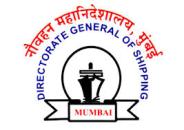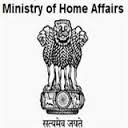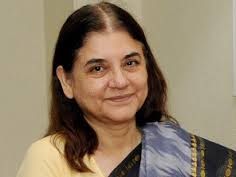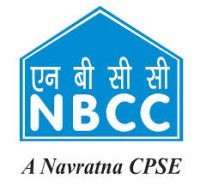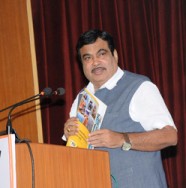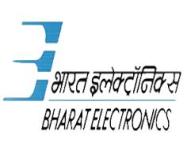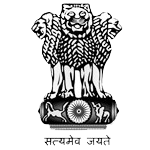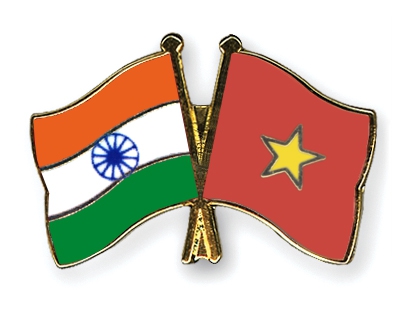The Union Home Minister, Shri Rajnath Singh receiving a memento from the Director General, Indian Coast Guard, Shri Rajendra Singh, in New Delhi.
Rajnath Singh receiving memento from the DG- Indian Coast Guard
The Directorate General of Shipping develops Feedback Module
The Directorate General of Shipping has developed a system for posting a feedback on various services that it offers. The system has been placed on its official website www.dgshipping.gov.in and allows users to give feedback on the overall performance of the Directorate General of Shipping on individual services offered by it or its subordinate offices.
In addition a system for providing concurrent feedback has also been placed at the end of the fourteen e-governance modules offered by the Directorate General of Shipping. This system will collect feedback/suggestions/grievances from the stake holders using these modules. The stakeholders have been given the facility to post their feedback and rate the services in different grades. The aim is to use the feedback for improving the quality of services offered.
The feedback module has a robust Management Information System, which will indicate areas where procedural or policy intervention is required for further improvement of services. The module is expected to benefit a large number of Indian seafarers who have to use the online services offered by DG Shipping to comply with the regulatory requirements.
Research examines social benefits of getting into Someone Else’s Head
Summary:Do you often wonder what the person next to you is thinking? You might be high in mind-reading motivation (MRM), a newly coined term for the practice of observing and interpreting bits of social information, like whether the person next to you is rhythmically drumming his fingers because he’s anxious or if someone is preoccupied because she’s gazing off into the distance.
Do you often wonder what the person next to you is thinking?
You might be high in mind-reading motivation (MRM), a newly coined term for the practice of observing and interpreting bits of social information, like whether the person next to you is rhythmically drumming his fingers because he’s anxious or if someone is preoccupied because she’s gazing off into the distance.
MRM is the tendency to engage with the mental states and perspectives of others. But it’s much more than just a means of passing idle time. Being high in MRM leads to many social benefits, including better teamwork, according to Melanie Green, an associate professor in the University at Buffalo Department of Communication and corresponding author of the groundbreaking new study published in the journal Motivation and Emotion.
“We’re not talking about the psychic phenomenon or anything like that, but simply using cues from other people’s behavior, their non-verbal signals, to try to figure out what they’re thinking,” says Green.
MRM is an entirely new construct — developed by Green and her coauthors Jordan M. Carpenter at the University of Pennsylvania and Tanya Vacharkulksemsuk at Haas School of Business, University of California, Berkeley — which also has implications for advertising and relationships.
Individuals high in MRM enjoy speculating on others’ thoughts based on the potentially hundreds of social cues they might receive. Those low in MRM dislike or have no interest in doing so. MRM is about the motivation to engage with other minds, and is distinct from the ability to accurately interpret others’ cues.
“We didn’t measure ability directly in our study of teamwork, but the research suggests that just the motivation to understand others, and presumably the behaviors that go along with that motivation, appear to lead to benefits,” says Green.
In addition to facilitating cooperation and better teamwork, people high in MRM also consider people in great detail and have a nuanced understanding of those around them.
“Those high in MRM seem to develop richer psychological portraits of those around them,” says Green. “It’s the difference between saying ‘this person strives for success, but is afraid of achieving it’ as opposed to ‘this person is a great cook.'”
The relevance of those portraits also appears to have implications for advertising and the salience of certain messages.
“High MRM people are more drawn to and pay more attention to messages with an identifiable source — a spokesperson or an ad focusing on company values — that is, someone whose perspective they can try to understand.” says Green. “On the other hand, low MRM people seem to pay more attention to ads that are more impersonal, like those that just discuss the product — a message that does not appear to come from a particular person or group.”
Although there is no previous research in MRM, there is a long history of studies on perspective taking. But much of that research has focused on situations where perspective taking, in a sense, is required.
“Think about seeing some kind of trouble and trying to figure out what’s wrong,” she says. “Or noticing your partner is upset and you try to figure out what they’re thinking.”
Green and her colleagues thought there might be a difference in how much people enjoy or were motivated to speculate on people’s thoughts in situations where there was no situational need or institutional pressure. It could be as simple as a bus passenger considering the thoughts of those across the aisle.
“This hadn’t been previously considered from the standpoint of individual differences,” says Green.
“That’s where this research is something new.”
Source:University at Buffalo(science)
Union Home Minister reviews Coastal Security
Union Home Minister Shri Rajnath Singh reviewed the issues related to coastal security with the officers of the Ministry of Home Affairs, Inter-State Council Secretariat (ISCS) and Registrar General of India.
Shri Susheel Kumar, Secretary (Border Management) briefed about the status of coastal security and measures being taken in this regard. Department of Border Management made a detailed presentation about coastal security issues, which included coastal policing, patrolling in territorial waters, contiguous zone and Exclusive Economic Zone, empowerment of coastal police stations to investigate crimes committed in EEZ, training of coastal police, setting up of Marine Police Training Institute in Gujarat, security of 26 single-point moorings, security of 12 major ports and 203 non-major ports in the coastal States/UTs.
During the meeting, safety and security of fishermen, issue of cards to them and colour coding of fishing vessels were also reviewed under the Phase – I of Coastal Security Scheme (2005 – 11) and Phase – II of CSS (2011-16) with a financial outlay of Rs. 1,580 crore. The Home Minister was also informed about the status of 131 coastal police stations sanctioned under CSS Phase – II, out of which 108 coastal security police stations were already operationlized.
The issues of coastal mapping of coastal police stations, local police stations, fishing landing points, ports, customs and immigration check posts on the coastal area map of the States / UTs were also discussed in details. The matters relating to tracking of vessels / boats and holistic development of 20 islands identified out of a total of 1382 offshore islands were also discussed.
Ms. Naini Jayaseelan, Secretary, ISCS explained that during the meetings of Zonal Councils, some of the coastal states had raised the issues of cards being issued to the fishermen and the card readers used by the coastal police. The representative of RGI explained that the operational issues were being sorted out and very shortly the time-lines for removing difficulties and the use of cards and the card readers will be finalized. The Home Minister directed that all the issues related to biometric cards and card readers should be sorted out immediately in consultation with the Indian Coast Guard (ICG), PSUs manufacturing these cards/card readers, concerned Ministries/ Departments of the Union Government and 13 coastal States /UTs. The Union Home Minister also directed that a definite time-frame for issuing the remaining cards to all the fishermen should be fixed.
The Home Minister mentioned that the issues relating to coastal security discussed during the Consultative Committee of MHA at Goa meeting and items in this regard pointed out by the Standing Committee of Parliament should be addressed at the earliest and the Action Taken Report be submitted immediately. He further mentioned that these issues will be discussed with the concerned states in a meeting on June 16, 2016 at Mumbai, therefore all necessary actions should be completed during this week.
Shri Kiren Rijiju, MoS (Home), Shri Rajiv Mehrishi, Home Secretary, Shri Susheel Kumar, Secretary (BM), Ms Naini Jayaseelan, Secretary (ISCS) and senior officers of MHA attended the meeting.
Maneka Gandhi addresses inauguration of All India Women Journalists’ workshop
The Union Minister for Women and Child Development, Smt. Maneka Sanjay Gandhi addressing at the inauguration of the All India Women Journalists’ workshop, jointly organised by the Ministry of Women and Child Development and Press Information Bureau, in New Delhi .
NBCC wins Gold Award in Construction Sector
NBCC (India) Limited has won Gold Award in Construction Sector, bestowed upon it at the 15th ANNUAL GREENTECH SAFETY AWARD 2016 Ceremony. The Company has been awarded the Award by M/s. Greentech Foundation, for its Outstanding Achievement in Safety Management for Redevelopment of Kidwai Nagar (East) Project, New Delhi.
IndianBureaucracy.com wishes its heartiest congratulations.
Nearly 250 journalists to participate in 1st ever All India Women Journalists’ Workshop
Around 250 journalists from 30 States/UTs across the country, representing 120 media organizations will come together on a single platform at the first ever ‘All India Women Journalists’ Workshop’ organized by Ministry of Women and Child Development in association with Press Information Bureau, Ministry of Information & Broadcasting in New Delhi . The women journalists represent print, electronic and online media across the country including small regional media organizations.
This Conference will be a unique gathering of women journalists, who specialize in social sector reporting, coming together to understand, discuss and deliberate on issues concerning women and children. The WCD Minister Smt Maneka Sanjay Gandhi will herself make a presentation to showcase the achievements of the Ministry during the last two years and also obtain a feedback on a number of issues concerning women and children especially on the recently released Draft National Policy for Women, Draft Anti Trafficking Bill, Draft Regulations under JJ Act. The Ministry is also looking forward to new ideas/ areas concerning women and children which could be taken up in the coming months.
In the post lunch session, the Minister of State for Commerce & Industry, Smt Nirmala Sitharaman will make a presentation on the achievements and new initiatives of the entire government during the last two years.
The participants have shown great enthusiasm towards this initiative of the WCD Ministry.
The WCD Ministry will also be putting up an exhibition of two of its large initiatives namely Beti Bachao-Beti Padhao and Children’s Helpline-Childline.
Nitin Gadkari at the 3rd Edition of TCI – IIM study of Operational Efficiency of Freight Transportation
The Union Minister for Road Transport & Highways and Shipping, Shri Nitin Gadkari addressing at the launch of the 3rd Edition of TCI – IIM study of the Operational Efficiency of Freight Transportation by Road, in New Delhi.

BEL wind energy power plant at Harappanahalli
Navratna Defence PSU Bharat Electronics Ltd has established an 8.4 MW wind energy power plant at Hanumanthappa site, Harappanahalli, in the Davangere district of Karnataka for captive consumption of energy for its factory at Bengaluru.
The wind energy plant, installed by the Engineering Services, Bangalore Complex, BEL, in collaboration with Suzlon Energy Limited, was inaugurated today (June 2, 2016), by Mr S K Sharma, Chairman & Managing Director, BEL. The 8.4 MW wind energy power plant is expected to generate around 170 to 180 lakh units of power per annum. This is in addition to about 98 lakh units power generated per annum by the existing 5.5 MW wind power plants of BEL. All these plants put together are expected to generate around 270-280 lakh units in the coming years, meeting about 90 per cent of BEL’s power consumption through renewable energy resources. The estimated reduction in carbon emission per annum is around 26,500 kgs equivalent of Co2. With this green initiative, BEL’s Bengaluru Complex is all set to achieve carbon neutral status.
More power: The 2.1 MW wind turbine generator with each blade size of 47 mts in length and covering a gigantic 97-mt rotor diameter, can generate 25-30 per cent more energy compared to the earlier 2.5 MW plants (5 numbers of 500 KW with a height of 50 mts and rotor diameter of 47 meters) and 3 MW plants (2 numbers of 1,500 KW with a height of 78 mts and rotor diameter of 82 mts) installed by BEL. The life of the machine is 20 years.
BEL is the first company to have placed an order on Suzlon Energy Limited for developing a wind energy power plant of 8.4 MW capacity with all these features in Karnataka. BEL has established a systematic approach for conservation of natural resources with focus on saving power and water and preserving greenery.
The 8.4 MW wind energy power plant of BEL, which was inaugurated at Hanumanthappa site, Harappanahalli, Davangere district, Karnataka.
Mr S K Sharma, Chairman & Managing Director, BEL, poses for a photo with senior officers of BEL after inaugurating the 8.4 MW wind energy power plant of BEL at Hanumanthappa site, Harappanahalli, Davangere district, Karnataka.
The BEL and Suzlon Energy Limited teams pose for a photo after the inauguration of the 8.4 MW wind energy power plant of BEL at Hanumanthappa site, Harappanahalli, Davangere district, Karnataka.
Finance Ministry & ADB Sign $120 Million Loan Agreement
Government of India and the Asian Development Bank (ADB) signed a $120 million loan agreement to improve irrigation and water management infrastructure in Odisha.
The loan is the second tranche of a $157.5 million financing facility under the Orissa Integrated Irrigated Agriculture and Water Management Investment Program. The financing will be used for modernizing seven irrigation subprojects resulting in improved irrigation in over 100,000 hectares, and strengthening of Water User Associations (WUAs) and the institutional capacity of Odisha’s Department of Water Resources. The selected areas for the investment program are the Baitarani, Brahmani, Budhabalanga, and Subernarekha river basins and part of the Mahanadi delta.
Mr. Raj Kumar, Joint Secretary (Multilateral Institutions), Department of Economic Affairs and Ms. M. Teresa Kho, Country Director, ADB’s India Resident Mission signed the loan agreement on behalf of Government of India and ADB respectively. A separate project agreement was signed by Sh. P.K. Jena, Principal Secretary, Water Resource Department of Government of Odisha.
Speaking on the occasion, Shri Raj Kumar said that agriculture is a priority sector for India and especially for Odisha because of its high potential to generate jobs and contribute to inclusive and sustainable economic growth. The project aims to improve existing irrigation infrastructure, operation and maintenance, and water use efficiency that will lead to higher agricultural productivity.
Ms. M. Teresa Kho, Country Director, ADB’s India Resident Mission said that the investment program has already demonstrated the value of participatory irrigation management and will continue to support the WUAs to manage the planning, construction, and operation and maintenance of irrigation systems as an equal partner of the government.
The second tranche loan from ADB’s ordinary capital resources has a 20-year term. The State of Odisha, acting through its Department of Water Resources is responsible for implementing the tranche 2 activities and overall program, which are both due for completion by September 2018.
Manohar Parrikar on Vietnam Visit
The Defence Minister Shri Manohar Parrikar arrived in Hanoi an official visit to Vietnam. After his arrival the Defence Minister met the National Defence Minister of Vietnam, Gen. Ngo Xuan Lich. During their meeting, both Ministers reviewed the entire spectrum of defence cooperation initiatives between the two countries and focussed on measures to further strengthen their bilateral defence relations. Shri Parrikar is the first guest of the National Defence Minister of Vietnam since his appointment in April 2016.
The two Ministers welcomed the efforts made by the Armed Forces of the two countries to further extend collaboration in new fields. Shri Parrikar complimented Vietnam on their successful participation in the International Fleet Review held in India in February 2016. He also visited the elite 308 Division and complimented the efforts of the Vietnam People’s Army soldiers on their contribution in the past.
The Defence Minister also visited the Research and Development facilities of Viettel Group of industries and both leaders emphasised the need for greater defence industry cooperation. Shri Parrikar attended a business roundtable meeting comprising defence industry delegates from the two countries. The meeting focussed on enhancing the defence industry networking, information sharing and exploration of possibilities for partnerships and collaborations between the two countries. The highlight of the meeting was the handing over of the bid document by Vietnam Border Guards to Larson & Toubro Limited. India has recently provided Vietnam with a US$100 million Line of Credit which is being utilised by Vietnam for procurement of Offshore Patrol Boats for their Border Guards.
On the mechanism of exchange of information, both leaders emphasised the necessity for sharing of white shipping information to facilitate exchange of information in the maritime domain. The two sides also focussed on enhancing hydrographic cooperation.
Shri Parrikar called on the President of Vietnam Mr. Tran Dai Quang and Prime Minister of Vietnam Mr. Nguyen Xuan Phuc, . The leaders reviewed the Strategic Partnership and the new initiatives undertaken to further strengthen it. They reiterated the resolve to continue high-level contacts between the leaders of both countries.
The visit by the Defence Minister underlines the strategic importance of the defence relationship and the personal priority that the leaders of both countries place on their strong bilateral relationship. Shri Parrikar extended an invitation to the Minister of National Defence of Vietnam to visit India at an early date and the invitation was accepted.



